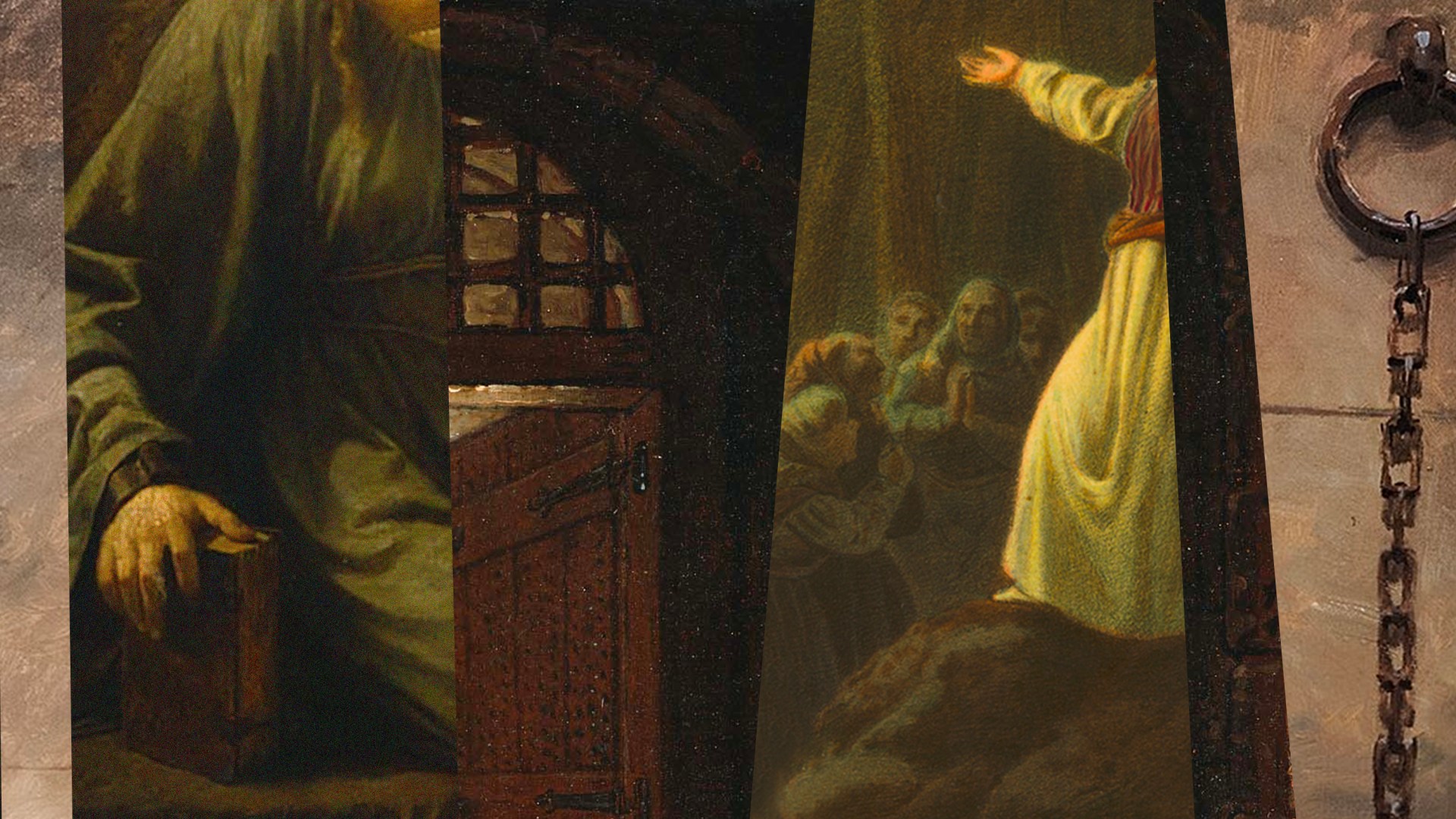About a decade ago, when my family was on vacation in Rome, Italy, we visited the Basilica di San Pietro in Vincoli (“Saint Peter in chains”)—where tourists and Christian pilgrims come to see Michelangelo’s famous statue of Moses and a set of prison chains that tradition claims belonged to the apostle Simon Peter during his imprisonment (Acts 12:3–19).
But it wasn’t just male apostles who were privileged with the unwanted gift of shackles. Paul tells us in Romans 16:7 that Andronicus and his wife, Junia, were both imprisoned for the sake of Jesus: “Greet Andronicus and Junia, my fellow Jews who have been in prison with me. They are outstanding among the apostles, and they were in Christ before I was.”
Two elements of this verse have been the subject of deep scrutiny and vigorous debate: Was Junia a woman? And was she really an “apostle”?
With respect to the first question, there was a span of several hundred years where Bible translations treated this person as a man (with the name Junias—notice the s), mostly because it was unthinkable that Paul could call a woman an “apostle.” But biblical scholars have rediscovered her female identity in the last few decades for several reasons, including the fact that Junia was a popular female name in the Roman period, while the name Junias is not attested at all.
And in regard to the second question, Paul acknowledges the married couple were Jewish like him and followed Jesus before he did. Since we know Paul came to believe in Jesus not long after the Resurrection (let’s say, around A.D. 33), Andronicus and Junia were among the “first generation” of Christian apostolic leaders.
In fact, most early church fathers and theologians in the second, third, and fourth centuries took it for granted that (1) Junia was a woman and (2) Junia was an apostle.
As the fourth century theologian and preacher John Chrysostom wrote, “To be an apostle is something great. But to be outstanding among the apostles—just think what a wonderful song of praise that is! … Indeed, how great the wisdom of this woman must have been that she was even deemed worthy of the title of apostle.”
Origen, another early church father, wondered whether this couple was among the 72 disciples sent out by Jesus himself (Luke 10:1; apostle means “one who is sent out”).
But what often gets sidelined in the discussion of Junia is her imprisonment and what it tells us about her. Paul’s mention of Junia and Andronicus in Romans is much more than a simple greeting from afar. Paul was intentionally highlighting this married couple, whom he considered model Christians of intrepid faith as exemplary for the church in Rome.
Roman culture promoted an ideal of the quiet, obedient, charming, and sweet domestic woman who works wool, tends to children, and maintains the home. And while the early Christians likewise believed in a warm and stable home, leaders like Paul enthusiastically commended Junia, along with her husband, for her service and sacrifice on the frontlines of gospel ministry.
Paul also celebrates another married couple, Priscilla and Aquila—house-church leaders who risked their lives for the gospel—as well as Phoebe, a female deacon in the church. He also names and praises Epenetus as the first Asian convert. Paul elevates these and other figures for their courageous faith—and for some, he applauds their faithfulness in chains.
Looking at Paul’s own experiences, we see that he acknowledges numerous incarcerations and mentions torture in the same breath (2 Cor. 6:5; 11:23). Prisons were some of the darkest and ugliest places in Roman society—so what is a woman like Junia doing there?
Among the many thousands of ancient Greek and Romans texts we have from antiquity, we have almost no record of women in Roman prisons, which were designed to hold alleged lawbreakers accused of serious crimes such as murder and treason. For petty crimes, a man would be given a fine or beaten. A woman would often be sent home and punished by her family.
For the very few women who were sent to prison, the conditions were horrific: overcrowding, no fresh air, darkness, heavy and sharp metal shackles that often cut into the skin. On top of that, sounds of torture echoed through the hallways, and the reality of sexual violence would have been a constant fear for the few incarcerated women.
Rome treated prisons as holding places until trial and sentencing, but their prisons were notoriously brutal. Prisoners had no rights and protections like there are today. Many died before ever seeing a judge, some by their own hand.
But Paul talks about Junia’s incarceration as a badge of honor, describing her and Andronicus as fellow prisoners. In this text, he uses a specific term for prisoner: synaichmalōtos, which technically means “prisoner of war” or “war captive.” And since Christians were not politically at war with Rome in a literal sense, this is a metaphor. Paul is saying these Christians are in chains because of the gospel—because of their public testimony about Jesus Christ.
Rome wasn’t the real foe in this war—Paul tends to focus on sin, death, and Satan as the archenemies of the gospel. Paul understood such imprisonments as a form of spiritual warfare. But why exactly were Andronicus and Junia in prison in the first place? What crimes were they accused of?
Given Paul’s commendation of them as heroes of the faith, we can assume it wasn’t for something like murder or violence. The most likely option is that this apostolic duo was put in custody for inciting a public disturbance while preaching the gospel in a public setting. My mind goes to the Ephesus incident in Acts, where Paul’s ministry provoked a riot. A local leader calmed the crowd down, warning them of Roman intervention (Acts 19:21–41).
Likewise, I imagine apostles like Andronicus and Junia went from city to city preaching to people in public and private settings, working miracles, setting captives free, and facing the consequences of turning the world upside down, as Acts 17:6 says. Along with this couple, Paul also called Aristarchus and Epaphras “fellow prisoners of war” (Col. 4:10; Phm. 23). What they all share is the illustrious badge of bondage for the sake of the gospel of Jesus Christ.
In his famous biblical homilies, John Chrysostom made the case that the letters from apostles written while they were imprisoned are more precious than those written when they were free. He writes, “Oh! Those blessed bonds! Oh! Those blessed hands which that chain adorned!” He goes on to say no miracle of healing in Scripture compares with the glory of these chains.
Why is there so much reverence for metal shackles of bondage?
First, believers who are imprisoned for their faith are forced to think more deeply and clearly about life and death and about the importance of eternal things. But Philippians 3:10 takes us even deeper, where Paul writes, “I want to know Christ—yes, to know the power of his resurrection and participation in his sufferings, becoming like him in his death.”
Early Christian leaders like Junia had the distinct privilege of living out this fellowship of suffering in their gospel incarcerations. Those who suffered such degradations with and for Jesus proved the potency of their faith, the truth of their conviction, and the extent of their love for Christ who first laid down his life for them.
For Paul, there was no greater outcome than new faith in the gospel and no greater mark of perseverance than being a gospel captive in chains. Chrysostom was right: Those chains are precious—not as holy relics but as evidence of counting and paying the cost of obeying the commission of public witness.
Nijay K. Gupta is professor of New Testament at Northern Seminary and author of Tell Her Story: How Women Led, Taught, and Ministered in the Early Church.









